The luxury goods company said founder Ippolita Rostagno will remain at the brand’s helm.
Sell or just shut down? Here’s how to tell
Howard Feller of MMG Advisors gives jewelers contemplating retirement a primer on evaluating which is the best option for their business: selling it or closing up shop.

As you head toward retirement, if your situation is similar to many privately held jewelry businesses, you may not have an obvious successor in place. It also may seem unlikely that you’d find a buyer from the outside. Under these circumstances, jewelry store owners across the country have simply been closing their doors.
Many owners have no idea what their business is worth, whether there’s even a market for it or where to get help to determine its value or identify a buyer. The purpose of this article is to review the broader options and outline the various factors that amount to a viable, marketable business. If they add up, what elements most determine the business’s sale value, and where does the owner go from there?
Your store may lack a succession plan. But it’s well-respected and profitable. You’ve had a long-standing business in a particular location, and it controls a meaningful market share with a loyal customer base. These factors are a great start towards salability. And whether or not the sale will generate a premium for you as owner, selling the business certainly enables you to recover more of your equity in the business than would simply closing the doors and liquidating the inventory.
Factors that contribute to salability and valuation
The key to successfully selling any business is demonstrating attributes that ensure sustainability, allowing the business to thrive in future years. Higher valuations typically result from companies having a number of these attributes in place. For a jewelry retailer, there are a few defining characteristics that buyers will look for; they are as follows.
1) A jewelry business may command more of a premium if it holds exclusive distribution rights to certain coveted brands. This is particularly true in the watch category. But equally significant might be exclusively representing a successful, in-demand jewelry designer.
2) While not an absolute necessity, having an e-commerce component in place is a favorable factor, particularly if your online presence provides you with a broader geographic purview, either regionally or internationally. And if the e-commerce platform showing signs of growth independently of your brick-and-mortar presence, so much the better.
3) Your physical location itself, whether it’s in a mall or a street-level retail presence, with a favorable long-term lease, also adds to the business’s potential attractiveness and value.
Perhaps as much of a contributing factor to salability and
Brand value is not unique to chains that have a central marketing function and a powerful image machine at work. A prominent jeweler on Main Street in a relatively small city or town, also enjoys this--you’re trusted in the local community, you’ve enjoyed longevity, you stock a great assortment and mix of brands, and you offer a high level of customer service--this all contributes to your unique brand equity, and if properly packaged and communicated to the potential buyer, becomes meaningful in the context of a sale.
When should I be thinking about selling in the first place?
For many jewelry store owners, very often a catalyst for evaluating the business is when the lease is coming to an end, but you really shouldn’t leave it until then. Sometimes an owner won’t want to renew a lease because it means a multi-year commitment. With retirement a few years away and the possibility that the business might not operate for much longer, most owners will be reluctant to lock themselves in that way. Or, alternatively, the landlord might seek a significant rent increase so that the economics of the store are no longer tenable. All of these factors taken separately or together can be a catalyst to wind down a business or look for a buyer.
Therefore, when there’s still a meaningful amount of time left on the lease, it’s very smart to take a proactive approach and get in front of a potential sale. That’s when the new owner can still benefit from your location, particularly if the location is desirable and the lease terms are favorable. This adds meaningful value to the business you’re selling, reducing uncertainty and assuring some continuity for a potential buyer, increasing the likelihood that you’ll get to a transaction. As a rule of thumb, try to think three to five years ahead of your lease ending.
The importance of clear bookkeeping in presenting your business for sale
Having accurate and well-prepared financial reports enhances your ability to consummate a transaction. It makes the buyer comfortable to see, through well-kept books, how your business has performed. A consistent set of financials that have been reviewed by an accountant is so important that it can make or break a deal. That’s another factor to get ahead of, well before you think you need to do so.
A jewelry business, just as any other business for sale, has to be merchandised properly. Identifying and zeroing in on buyers whose culture will meld with yours and who are likely to pay most for your company and then packaging it to potential buyer according to each’s specific needs and priorities will help to maximize value. If you hire an advisor to sell your business, they should be able to help you with much of this.
Beyond that, your advisor will help you maintain your objectivity throughout the negotiations-- minimize the emotion that goes along with any sale of a privately or family-held business, allow you to continue to run your business during what could be a time-consuming process and coordinate the other professionals, such as your attorney and accountant, while advocating for you at the negotiating table.
Lastly, how do you know if it’s less a question of a sale and more of a wind down?
Again, an advisor should help with this assessment because you might be too close to take an objective view. But, in general, if your operating costs are high, sales have been flat or declining, margins have been challenged or if you don’t have exclusive rights to any proprietary brand in your market your business will be far less attractive to any successor, whether from the outside or in your immediate circle.
In this as in all cases, there are many choices. The key is to get an objective assessment, early enough in the game, so that your options remain as broad as possible. That way, you won’t be forced into the default of simply closing your doors.
Howard Feller is a partner at MMG Advisors, an investment banking, strategic and financial advisory firm servicing the retail, fashion, textile, jewelry and beauty sectors. He can be reached at H.Feller@mmgus.com.
The Latest

Laura Burdese, who joined the Italian luxury brand in 2022, will take on the role in July.

The National Jeweler editors revisit the most noteworthy industry happenings and design trends from 2025.

How Jewelers of America’s 20 Under 40 are leading to ensure a brighter future for the jewelry industry.

Need a gift for the cat lover who has everything? Look no further than our latest Piece of the Week.


It purchased the “Grosse Pièce,” an ultra-complicated Audemars Piguet pocket watch from the ‘20s, for a record-breaking price at Sotheby’s.

The lab-grown diamond grower now offers custom engagement and fashion jewelry through its Kira Custom Lab Jewelry service.

Roseco’s 704-page catalog showcases new lab-grown diamonds, findings, tools & more—available in print or interactive digital editions.

Chandler got his start at Michelson Jewelers and has served as DCA president and CEO since 2001. He will retire at the end of the month.

The boutique is slated to open this week inside Terminal 8, offering pre-owned Rolex watches and more to international travelers.

Sponsored by Digital Monitoring Products
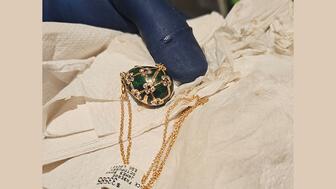
The special-edition egg pendant ingested in a New Zealand jewelry store was recovered after a six-day wait.
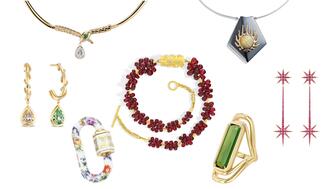
Associate Editor Natalie Francisco plays favorites with Piece of the Week, selecting a standout piece of jewelry from each month of 2025.

The “Love and Desire” campaign is inspired by the magic that follows when one’s heart leads the way, said the brand.

Two awardees will receive free tuition for an educational course at the Swiss lab, with flights and lodging included.

Berta de Pablos-Barbier will replace Alexander Lacik at the start of January, two months earlier than expected.
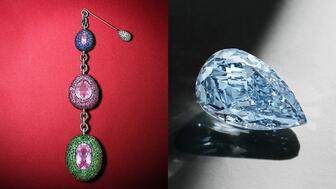
Sotheby’s held its first two jewelry sales at the Breuer building last week, and they totaled nearly $44 million.

Winners will receive free registration and lodging for its fourth annual event in Detroit.

Here are six ideas for making more engaging content for Instagram Reels and TikTok, courtesy of Duvall O’Steen and Jen Cullen Williams.
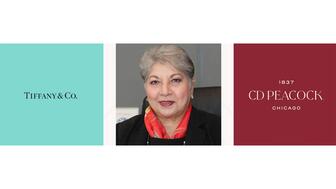
The honorees include a notable jewelry brand, an industry veteran, and an independent retailer.

Carlos Jose Hernandez and Joshua Zuazo were sentenced to life without the possibility of parole in the 2024 murder of Hussein “Sam” Murray.

Yood will serve alongside Eduard Stefanescu, the sustainability manager for C.Hafner, a precious metals refiner in Germany.

The New Orleans jeweler is also hosting pop-up jewelry boutiques in New York City and Dallas.

Set in a Tiffany & Co. necklace, it sold for $4.2 million, the highest price and price per carat paid for a Paraíba tourmaline at auction.
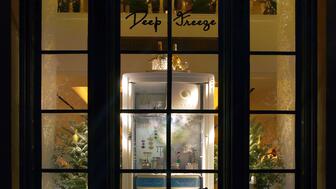
The jeweler’s “Deep Freeze” display showcases its iconic jewelry designs frozen in a vintage icebox.
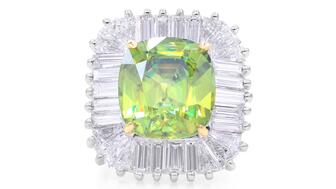
Take luxury gifting to new heights this holiday season with the jeweler’s showstopping 12-carat sphene ring.
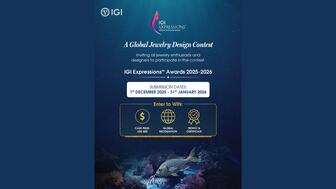
This year's theme is “Unveiling the Depths of the Ocean.”
























